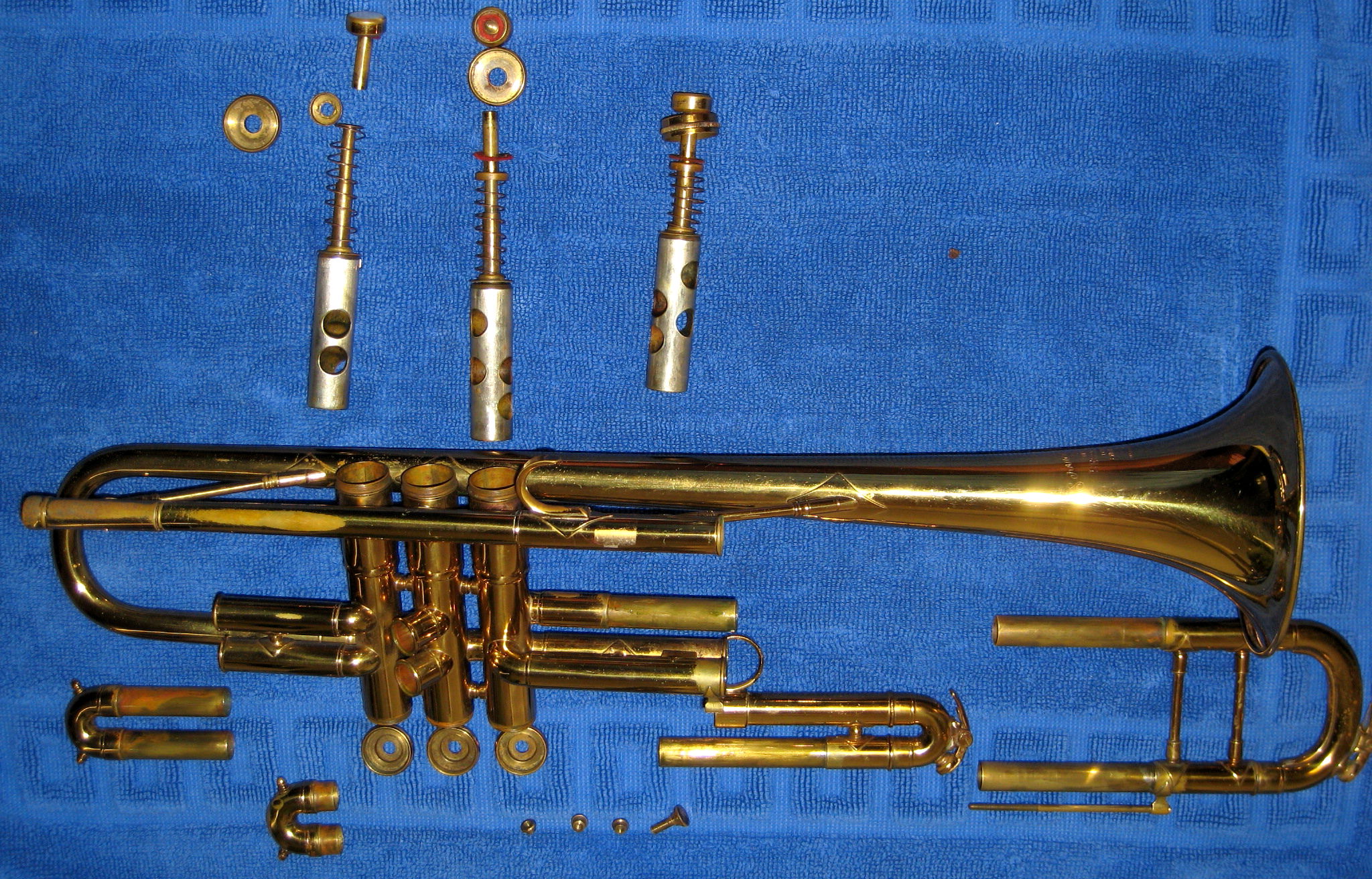The middle ages had a few different instruments that could be described as medieval trumpets. While historians don't have a complete picture of the usage of trumpets at this period in time, evidence suggests that the advancement of trumpets came from a variety of people groups, stemming from use of animal horns in both Oriental and Roman cultures, and advancing production as skilled craftsmen began to create instruments out of metals.
The buisine and clarion
The buisine was perhaps the most common instrument of the time, constructed from metals such as copper, brass, or silver. Its name is derived from the Roman buccina (Latin), which would have typically been formed from the horn of an animal.
The buisine trumpet was a regal looking instrument, extending six feet long, and was originally used for military and other ceremonial purposes. Eventually it would be used in musical performances as well, but the length of the instrument would have made it uncomfortable and impractical for extended musical use.
Despite trumpets having a long history of being used for military purposes in Biblical times and in the Roman Empire, the use of trumpets in the military had fallen out of favor in Europe. It wasn't until the Crusades that trumpets were reintroduced, likely as a result of adopting some of the cultural practices of their enemies.
In addition to the buisine, smaller trumpets made out of metal also existed around this time, called the clarion. The name of the instrument, clarion, is the same as the register of the trumpet that it refers to. As you might imagine, because the length of the trumpet is smaller than the buisine, these trumpets were pitched higher than their counterparts.
The cornu
While the buisine and clarion were common in England and France, the Roman cornu was widely used throughout Europe and the Orient.
Performing on medieval trumpets
Similar to the natural trumpet, none of these trumpets had any valves to change the pitch of the instrument. Modern (normal) piston valves or rotary valves elongate sections of tubing to change pitches chromatically. Given that even simple finger holes in the instrument weren't common until the 1400s, that meant that players were limited to only the given notes within a single harmonic series. For a deeper dive into harmonic series, take a look at our natural trumpet article. Therefore trumpet players relied on their embouchure and airstream to change pitches.
As previously discussed, trumpets of the time were largely used for warfare and military ceremony. But trumpets also were favorites of special events such as royal weddings and jousting tournaments. We often think of minstrels and troubadours singing and playing stringed instruments such as lutes. But similar groups of musicians were also responsible for performing the medieval trumpet at outdoor events.
Medieval trumpet music
While we know some of the early trumpets used in the medieval period, there is not a great wealth of documentation about the subject. Music theorist Johannes de Grocheo claimed that a skilled player would be able to perform four notes on the trumpet, and given what we know about the harmonic series, this would have been the octave, fifth and fourth.
There were four different instrumentations that commonly included trumpets at the time. Military music usually involved trumpet in combination with percussion, ceremonial music involved combinations of trumpet with percussion and woodwinds, dance music was written for trumpets with woodwinds, and finally solo trumpet as well.
When trumpets played with woodwinds, the trumpet would be responsible for playing sustained pitches acting as a drone while the woodwinds would dance over the top playing more melodic passages. It was simply the limitation of the instrument at the time, governed by the length of the instrument.
Once the size of the instrument could be reduced by curving the instrument into a smaller form factor, players would be able to play in the upper clarino register of the instrument. This would allow them to transition from playing purely fanfaresque intervals in the lower part of the harmonic series to a more melodic role as the upper notes in the harmonic series have much closer intervals.




